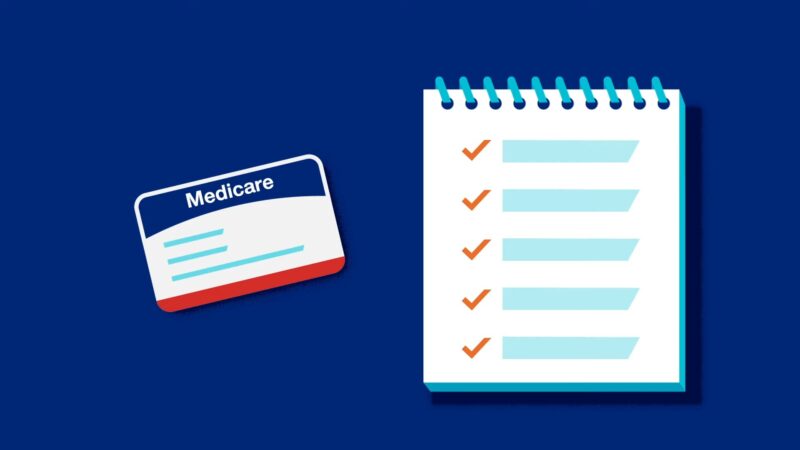Medicare and Medicaid are two of the largest health insurance programs in the United States, serving millions of Americans. While Medicare primarily caters to people over 65 and those with certain disabilities, Medicaid provides coverage for low-income individuals and families.
| Feature | Medicare | Medicaid |
|---|---|---|
| Type of Program | Federal Health Insurance | Joint Federal and State Program |
| Primary Beneficiaries | People aged 65+, People with certain disabilities | Low-income individuals and families |
| Coverage | Hospital Insurance, Medical Insurance, Prescription Drugs | Varies by state; generally includes hospital stays, doctor visits, long-term medical care |
| Program Parts | Parts A (Hospital Insurance), B (Medical Insurance), D (Prescription Drug Coverage) | State-specific programs, may include waivers for special programs |
| Eligibility | Based on age, disability status, and end-stage renal disease | Based on income, assets, family size, and additional state criteria |
| Cost to Beneficiaries | Premiums, deductibles, copayments (varies by plan) | Minimal to no cost; some beneficiaries may have small copayments |
| Provider Enrollment | Providers must enroll and meet specific federal standards | Providers must enroll in each state program and meet state-specific standards |
| Audit and Compliance | Regular audits; compliance with federal health and safety standards | State-level audits; compliance with both state and federal regulations |
What is Medicare?

Medicare, established in 1965, is a federal health insurance program in the United States primarily designed for individuals aged 65 and older. However, it also extends coverage to younger people with certain disabilities and those with End-Stage Renal Disease (ESRD) or Amyotrophic Lateral Sclerosis (ALS).
Structure and Parts
Medicare is divided into several parts, each covering different healthcare services.
- Medicare Part A (Hospital Insurance): This part covers inpatient hospital care, skilled nursing facility care, hospice care, and some home health services. Most beneficiaries don’t pay a monthly premium for Part A if they or their spouse paid Medicare taxes while working. However, deductibles and copayments may still apply.
- Medicare Part B (Medical Insurance): Part B covers outpatient care, including doctor visits, preventive services, ambulance services, and medical equipment. It requires a monthly premium, which most people pay out of their Social Security benefits. Costs may vary based on income, and it also includes a deductible and coinsurance.
- Medicare Part C (Medicare Advantage Plans): These are Medicare-approved private insurance plans that combine the benefits of Part A and B, and often Part D. These plans may offer additional benefits, such as dental, vision, and hearing coverage, and vary in costs and coverage details.
- Medicare Part D (Prescription Drug Coverage): This part covers prescription drugs and is offered through private Medicare-approved insurance companies. Each Part D plan has its own list of covered drugs, called a formulary, and varies in cost.
Eligibility and Enrollment

Eligibility for Medicare typically begins at age 65. People under 65 with certain disabilities or ESRD are also eligible. Enrollment in Parts A and B is automatic for those receiving Social Security benefits, but others may need to sign up during designated enrollment periods.
Additional Medicare Programs
- Medigap (Medicare Supplement Insurance): This private insurance helps pay some of the healthcare costs that Original Medicare doesn’t cover, like copayments, coinsurance, and deductibles.
- Medicare Savings Programs: For low-income individuals, these programs help pay premiums, deductibles, and other out-of-pocket costs associated with Medicare.
Medicare’s Impact
Medicare plays a vital role in ensuring access to healthcare for older adults and people with disabilities. It is continually evolving, with changes in policies, coverage options, and costs, to better meet the needs of its beneficiaries.
What is Medicaid?

Medicaid, created alongside Medicare in 1965, is a joint federal and state program providing health coverage to millions of Americans, including eligible low-income adults, children, pregnant women, elderly adults, and people with disabilities.
Unlike Medicare, Medicaid caters to individuals and families based on income and resources, making it a key player in the U.S. healthcare safety net.
State Administration and Federal Guidelines
Medicaid programs vary significantly from state to state, as each state administers its own program within federal guidelines. This structure allows states to tailor their Medicaid programs to meet the specific needs of their populations.
States have flexibility in determining covered services, eligibility groups, and payment rates.
Coverage and Services
Medicaid covers a broad range of health services, including hospital stays, doctor visits, nursing home care, home health care, and preventive care. It also covers long-term care, a significant benefit not typically covered by Medicare or private insurance.
Each state’s Medicaid program must meet certain federal requirements, but they can also choose to cover additional services.
Eligibility and Enrollment
Eligibility for Medicaid is primarily based on income, and the Affordable Care Act (ACA) expanded Medicaid eligibility in many states. Enrollment in Medicaid can occur at any time throughout the year, unlike Medicare, which has specific enrollment periods.
This continuous enrollment opportunity is crucial for providing access to healthcare for low-income individuals and families who may experience changes in their financial situations.
Children’s Health Insurance Program (CHIP)

CHIP, a related program, provides health coverage to children in families with incomes too high to qualify for Medicaid but too low to afford private coverage. Like Medicaid, CHIP is administered by states according to federal guidelines.
Role in Public Health
Medicaid is instrumental in providing healthcare to the most vulnerable populations. It supports not just healthcare access but also contributes to the financial stability of those it serves. The program is also a significant source of funding for hospitals, clinics, and other healthcare providers serving low-income communities.
Certification Programs
To participate in Medicare, healthcare providers must undergo a specific certification process. This ensures they meet the federal requirements for health and safety.
Initial Steps for Medicare Certification
The journey towards Medicare certification involves several key steps:
- Obtain a National Provider Identifier (NPI): This unique identification number is necessary for all healthcare providers.
- Complete the Enrollment Application: Providers must complete the Medicare enrollment application (CMS-855) to get approved as a Medicare provider.
Survey
After the application, providers undergo a survey process:
- Conducted by State Survey Agencies: These agencies assess whether providers meet Medicare health and safety standards.
- Health and Safety Standards: Known as Conditions of Participation (CoPs) or Conditions for Coverage.
Medicaid certification, although similar to Medicare, has its nuances due to state-specific requirements.
Initial Steps for Medicaid Certification
Key initial steps for Medicaid certification include:
- Understand State-Specific Requirements: Each state has its unique Medicaid program and certification requirements.
- Complete the Medicaid Provider Application: Similar to Medicare, providers must complete a specific application for Medicaid.
Complying with State Requirements
Following the application, providers must adhere to state-specific regulations:
- State Survey Process: This process varies by state but generally includes a review of the provider’s facilities and services.
- Ongoing Compliance: Providers must continuously meet state-specific Medicaid standards to maintain their certification.
Dual Certification
Many healthcare providers opt for dual certification in both Medicare and Medicaid.
Benefits of Dual Certification
Dual certification allows providers to serve a broader patient base. It includes:
- Increased Patient Access: Providers can cater to both Medicare and Medicaid patients.
- Streamlined Operations: Understanding both programs can improve operational efficiency.
Steps to Achieve Dual Certification
To achieve dual certification:
- Understand the Overlap: Identify the common requirements between Medicare and Medicaid.
- Simultaneous Application Process: Providers can often apply for both programs concurrently, streamlining the process.
Compliance and Audits
Once certified, maintaining compliance is crucial for healthcare providers.
Ongoing Compliance
To remain compliant, providers must:
- Regularly Update Policies: Ensure that procedures and policies meet the evolving standards of Medicare and Medicaid.
- Continuous Education: Staff should be kept informed about the latest regulatory changes.
Preparing for Audits
Audits are a routine part of both Medicare and Medicaid programs. Providers should:
- Maintain Accurate Records: Keeping detailed and accurate records is essential for a smooth audit process.
- Understand the Audit Process: Familiarize themselves with the common areas of focus during audits.
What About Expanding Services?
For healthcare providers, expanding their services to include Medicare and Medicaid patients not only broadens their potential client base but also plays a crucial role in community health.
Expanding to Different Medicare Parts
Understanding the different parts of Medicare allows providers to tailor their services:
- Medicare Advantage Plans (Part C): Providers can consider partnering with Medicare Advantage Plans, which are an alternative way to get Medicare Part A and Part B coverage.
- Specialized Programs: Providers can also specialize in certain Medicare-covered services, like chronic care management or telehealth.
Expanded Medicaid Services
Given Medicaid’s state-specific nature, providers can:
- Research Local Needs: Understanding prevalent health issues in their state can guide providers in aligning their services with Medicaid beneficiaries’ needs.
- Collaborate with Community Programs: Partnering with state-run programs or community health initiatives can be a strategy to better serve Medicaid populations.
Advanced Compliance Strategies
Staying compliant with Medicare and Medicaid regulations requires a proactive approach.
Keeping Up with Policy Changes
- Regular Training: Organizing frequent training sessions for staff to stay updated on policy changes is crucial.
- Utilizing Technology: Implementing software solutions that are updated with the latest regulations can help in maintaining compliance.
Advanced Audit Preparation Techniques
- Mock Audits: Conducting internal audits can prepare providers for the actual process.
- Professional Consultation: Engaging with healthcare compliance consultants can offer insights and readiness for audits.
Benefits of New Technologies

Incorporating technology can streamline the process of providing services to Medicare and Medicaid patients.
Electronic Health Records (EHRs)
- Integration with Billing: EHRs that integrate seamlessly with Medicare and Medicaid billing can reduce administrative burdens.
- Patient Management: Sophisticated EHR systems can help in managing patient care more effectively, especially for chronic conditions prevalent among Medicare and Medicaid beneficiaries.
Telehealth Services
- Expanding Access: Telehealth has become increasingly important, particularly for patients in remote areas.
- Compliance with Telehealth Regulations: Providers must be aware of the specific Medicare and Medicaid regulations governing telehealth services.
FAQs
Can a person be enrolled in both Medicare and Medicaid at the same time?
Yes, individuals who qualify for both Medicare and Medicaid are known as “dual eligibles.” They can receive benefits from both programs. Typically, these individuals are low-income seniors or young people with disabilities. Medicare serves as their primary insurance, covering most healthcare costs, while Medicaid can cover additional expenses and services that Medicare does not, such as certain long-term care costs.
How do recent policy changes affect telehealth services under Medicare and Medicaid?
Recent policy changes, especially during the COVID-19 pandemic, have expanded telehealth services under both Medicare and Medicaid. Medicare has temporarily broadened access to telehealth services to allow beneficiaries across the country to receive a wider range of services without having to travel to a healthcare facility.
Are there special Medicare programs for individuals with specific chronic conditions?
Yes, Medicare offers several Special Needs Plans (SNPs) designed for individuals with specific diseases or characteristics. These include Chronic-Condition SNPs (C-SNPs) for people with severe or disabling chronic conditions, like diabetes, heart failure, or dementia.
What is the Medicaid Estate Recovery Program, and how does it work?
The Medicaid Estate Recovery Program seeks to reclaim costs paid for Medicaid recipients’ care from their estate after they pass away. This program applies primarily to recipients of long-term care and related services. The recovery is limited to the assets in the deceased recipient’s estate, and there are exemptions and limitations, especially aimed at protecting surviving spouses and dependent children.
Summary
Successfully obtaining and maintaining Medicare and Medicaid certifications not only requires adherence to their respective regulations but also a commitment to continuous learning and adaptation.
By leveraging technology, forming strategic partnerships, and staying informed about policy changes, healthcare providers can effectively serve the Medicare and Medicaid population, contributing significantly to public health.
